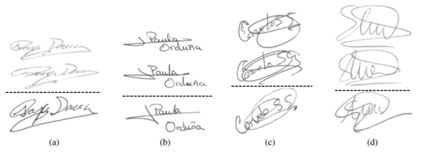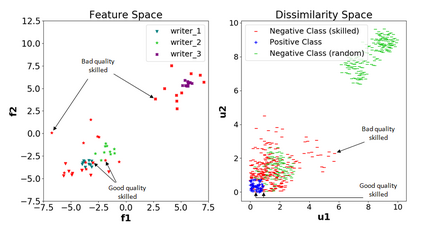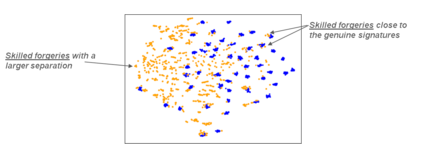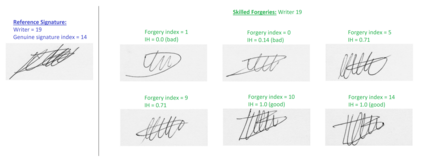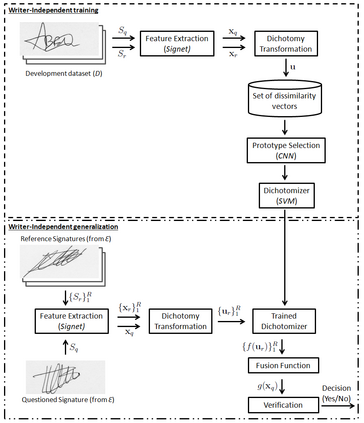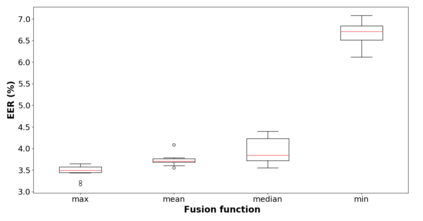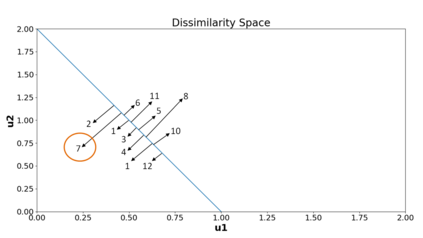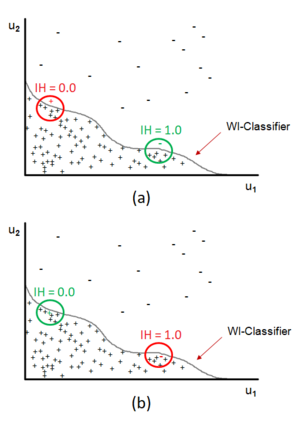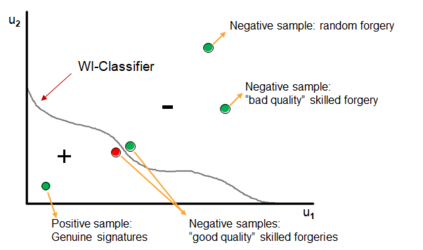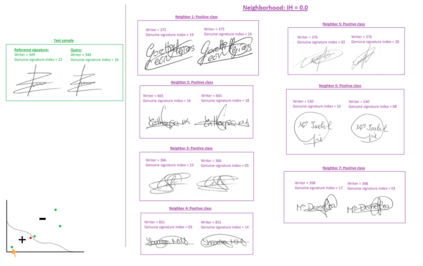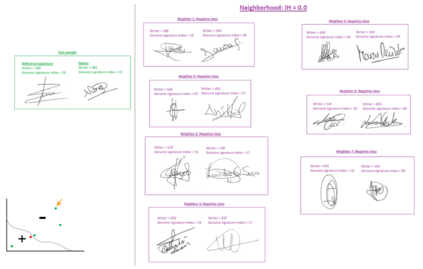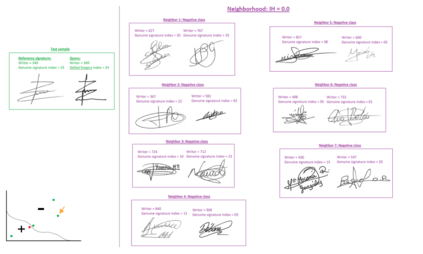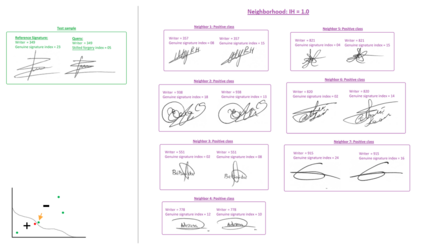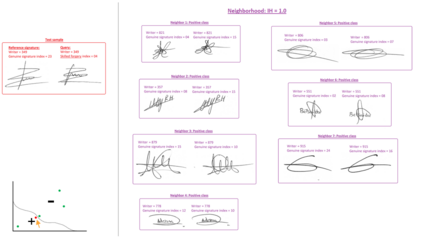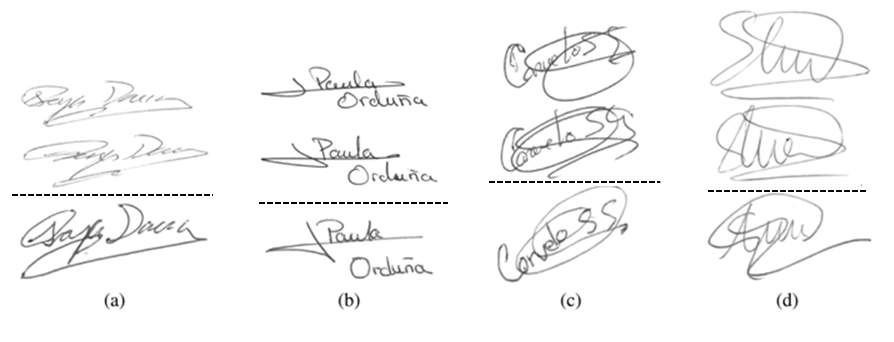High number of writers, small number of training samples per writer with high intra-class variability and heavily imbalanced class distributions are among the challenges and difficulties of the offline Handwritten Signature Verification (HSV) problem. A good alternative to tackle these issues is to use a writer-independent (WI) framework. In WI systems, a single model is trained to perform signature verification for all writers from a dissimilarity space generated by the dichotomy transformation. Among the advantages of this framework is its scalability to deal with some of these challenges and its ease in managing new writers, and hence of being used in a transfer learning context. In this work, we present a white-box analysis of this approach highlighting how it handles the challenges, the dynamic selection of references through fusion function, and its application for transfer learning. All the analyses are carried out at the instance level using the instance hardness (IH) measure. The experimental results show that, using the IH analysis, we were able to characterize "good" and "bad" quality skilled forgeries as well as the frontier region between positive and negative samples. This enables futures investigations on methods for improving discrimination between genuine signatures and skilled forgeries by considering these characterizations.
翻译:大量作家,每个作家培训样本数量少,阶级内部差异很大,阶级分布严重不平衡,这是脱线手写签名核查问题的挑战和困难。解决这些问题的一个好办法是使用独立作家框架。在WI系统中,单一模型经过培训,对所有作者进行签名核查,使其从二分制转变产生的不同空间进行签名。这一框架的优势之一是其可调适性,能够应对其中一些挑战,并易于管理新的作家,从而在转让学习过程中加以使用。在这项工作中,我们展示了这一方法的白箱分析,强调如何应对挑战,通过聚合功能动态选择参考资料,以及将其应用于转让学习。所有分析都是通过实例硬度(IH)测量在实例一级进行的。实验结果表明,通过IH分析,我们能够将“好”和“坏”技能质量高的伪造定性为“好”以及前沿区域,并将之作为正面和负面样品之间的前沿区域。这有利于未来调查如何通过考虑这些样本来改进真实签名和熟练人之间的区分。

